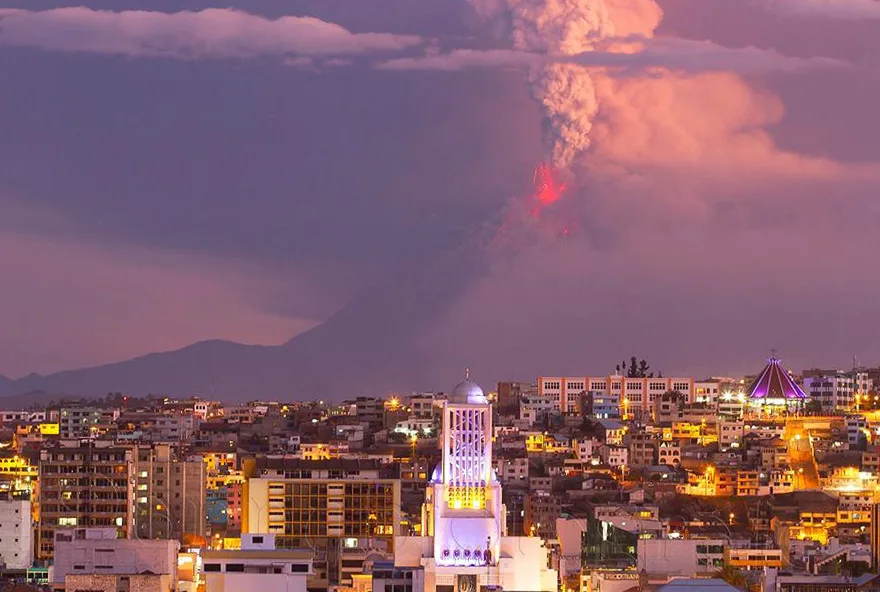Volcanic eruption in Chile is a reminder of the power of Ecuador’s volcanos, scientist says; he keeps an eye on Tungurahua and Cotopaxi
The spectacular eruption of Volcán Calbuco in Chile, should be a reminder to Ecuadorians of the enormous power that surrounds them, says a retired volcanologist.
Although Calbuco is in a sparsely populated area of southern Chile, its effect is widespread as falling ash has collapsed roofs on hundreds of homes in Chile, killed livestock and crops, and shut down air travel more than a thousand miles away.
“It’s a thing of beauty and it’s a thing of horror,” says Gerald Greene, a volcanologist who has lived part-time in Ecuador since 1999, when he came to observe the eruption of Volcán Tungurahua, east of Ambato. “The power of volcanoes, like the power of earthquakes, is something humans have a hard time wrapping their minds around,” he says. “I’ve been studying volcanoes since I was in college and I still have trouble comprehending what they can do.”
Greene, who literally lives under Tungurahua in the town of Baños, says Calbuco should be a wake-up call for those living in Ecuador’s Andes. “In Baños, we’ve become accustomed to relatively minor activity in recent years and it’s easy to be lulled into thinking that this is all there is to it, but we’re wrong. Within a matter of years, maybe very soon, Tungurahua will have a major eruption and Baños will be destroyed.”
According to Greene, Baños is built on multiple layers of volcanic eruptions, the most recent just a few hundred years old. “It’s part of the charm of the place. This is a temporary arrangement and we should enjoy it while we can,” he says, adding, “I go around humming the Jimmy Buffet song about living under the volcano.”
As powerful as Tungurahua is, Greene says the real giant in the Ecuadorian Andes is Cotopaxi, 50 miles south of Quito. “That’s the monster; it’s what Humboldt called the beast of the Andes,” he says. “It’s very active and it has been reshaping the geography of Ecuador for thousands of years,” he says.
Although Cotopaxi has not erupted in more than 70 years, Greene says activity is increasing and the magna dome under the volcano is rising. “Human memory is short and after 70 years, it’s easy to think the threat is gone,” he says.
According to Greene, Cotopaxi, which is the world’s highest active volcano at 5,911 meters, or 19,400 feet, has devastated areas as far away as 100 miles on several occasions. “There have been 50 eruptions in historic times and several of them have sent lava flows all the way to the Pacific Ocean,” Greene says. “Quito is built on the outflow of Cotopaxi eruptions. Consider that, if you think the danger has passed.”
So why does Greene live under Tungurahua? “Probably for the same reason I played with fire when I was a kid,” he says. “I could live in Cuenca or Loja, where’s there no danger, but I like being close to the action.”























